
Our product evaluations are completely independent and free from advertisements. Should you make a purchase via the links on our website, we might receive a small commission, which is a key support for our review process. For more details, click here.
Selecting the perfect sleepwear and sleep environment for a baby is a critical decision for new parents, as it can affect their comfort and safety during sleep. On the journey to ensuring sweet dreams for the little one, it is essential to grasp the basic principles of infant sleep and to understand the considerations that go into choosing not just the right clothing but also the ideal sleep furniture. The decisions made in these early stages can have a profound impact on a child’s sleep quality and overall health.
The right sleepwear is paramount for a baby’s comfortable sleep, and so is selecting the sleeper furniture that not only meets safety standards but also fits into the parents’ lifestyle and nursery space. Beyond the sleepwear and furniture, parents must also account for additional considerations such as room temperature, materials, and design that could affect sleep. Proper maintenance and care for baby sleepers ensure longevity and ongoing comfort, while also addressing common concerns that may arise during the infant’s development.
Key Takeaways
- Appropriate sleepwear and furniture selection is key to a baby’s comfortable sleep.
- Additional factors like room environment and material safety play a vital role in sleep quality.
- Ongoing maintenance and addressing common parent concerns are crucial for optimal use of baby sleepers.
Understanding Baby Sleep Basics
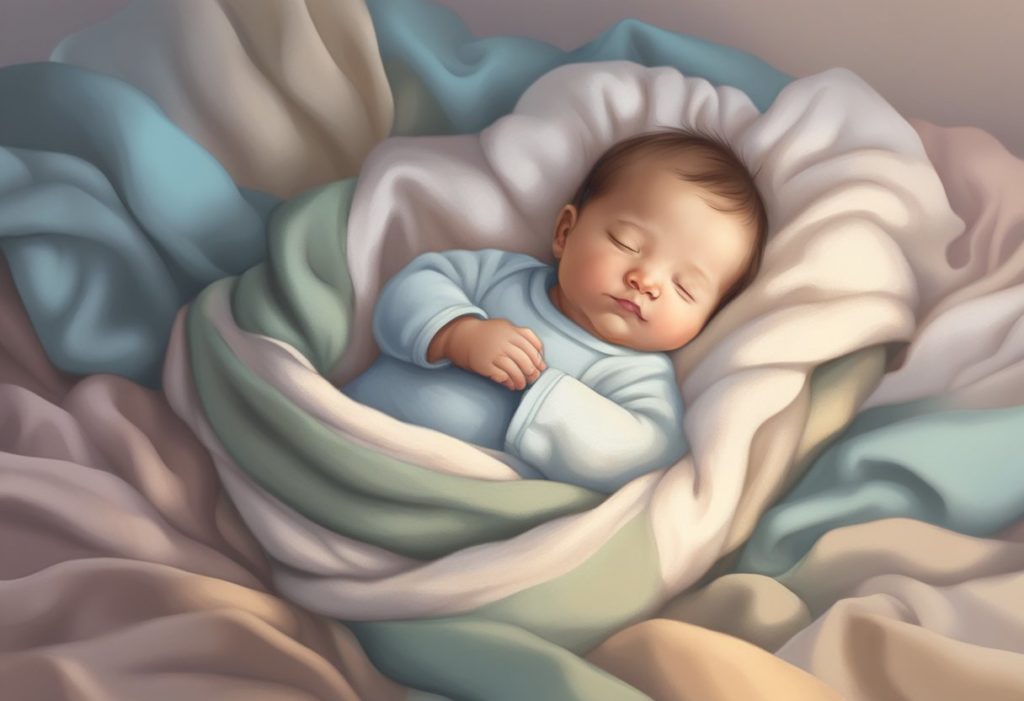
Choosing the perfect baby sleeper is a critical decision that impacts an infant’s safety and sleep quality. Mastering the fundamentals of infant sleep helps ensure your little one gets the rest they need in a secure environment. Here are essential components to consider.
The Importance of Safe Sleep
Safe sleep is paramount for reducing the risk of Sudden Infant Death Syndrome (SIDS). The American Academy of Pediatrics strongly advises parents to put infants to sleep on their backs, on a firm crib mattress free from loose bedding and toys. Swaddling should be done properly to prevent any potential risks that could arise from the fabric covering the baby’s face or overheating.
Developing a Bedtime Routine
A consistent bedtime routine is crucial for toddlers and infants to establish healthy sleep habits. A sequence of calming activities like baths, reading, and soothing lullabies can signal to the child that it’s time to wind down. Pediatricians stress the importance of routines, as they help regulate a baby’s internal clock and encourage better sleep cycles.
Sleep Environment Essentials
Creating an optimal sleep environment is fundamental for a good night’s rest for infants. A quiet room with minimal noise and soft, dimmed light can be conducive to sleep. Ensure the crib or bassinet is positioned away from windows and cords that could pose a safety hazard. Moreover, the room temperature should be comfortable to avoid disrupting the infant’s sleep.
By focusing on these key aspects of infant sleep, you can create a conducive and safe environment that supports your baby’s developmental needs.
Choosing the Right Sleepwear
In selecting the perfect sleepwear for a baby, comfort, safety, and material quality are paramount. Brands that prioritize these aspects tend to offer the most suitable options for peaceful sleep.
Materials and Fabrics
When choosing baby sleepwear, the fabric’s breathability and softness are critical for a baby’s delicate skin. Cotton is a popular choice for its natural, breathable properties, making it ideal for maintaining an even body temperature. Bamboo fabric is another excellent option, known for its softness and hypoallergenic qualities. For colder climates, parents might opt for fleece or wool sleepwear, ensuring the baby remains warm and cozy. In all cases, choosing organic materials can provide additional peace of mind, as they are free from chemicals and gentle on the skin.
Designs and Features
Practicality melds with cuteness in baby sleepwear design. Look for features like zippers or snaps that make for easy diaper changes without too much disruption. Adorable prints and patterns can add to the appeal, but the functionality should not be overlooked. Some sleepwear comes in the form of a sleep sack or swaddle to keep the baby snugly wrapped while allowing for movement. Opt for garments with minimal embellishments to reduce the risk of irritation or discomfort during sleep.
Safety First: Sleepwear Considerations
While aesthetics are important, safety standards should be a top priority. Sleepwear should be snug-fitting to reduce the risk of suffocation and comply with national safety features guidelines. Flame-resistant materials or snug-fitting designs are vital safety considerations for sleepwear. Parents should always check that the sleepwear they choose meets or exceeds current safety regulations to ensure their baby is sleeping securely and safely.
Size and Fit Adjustments
As babies experience rapid growth, selecting a size that fits well without being too restrictive is essential. Sleepwear should be snug but not tight, with enough room for a baby to move freely. Many brands offer adjustable features, such as fold-over cuffs or adjustable mattress height, that can accommodate a growing baby. It’s crucial to adjust size and fit as the baby develops, seeking garments that can adapt to changes in size while maintaining comfort and safety.
Selecting the Ideal Sleeper Furniture
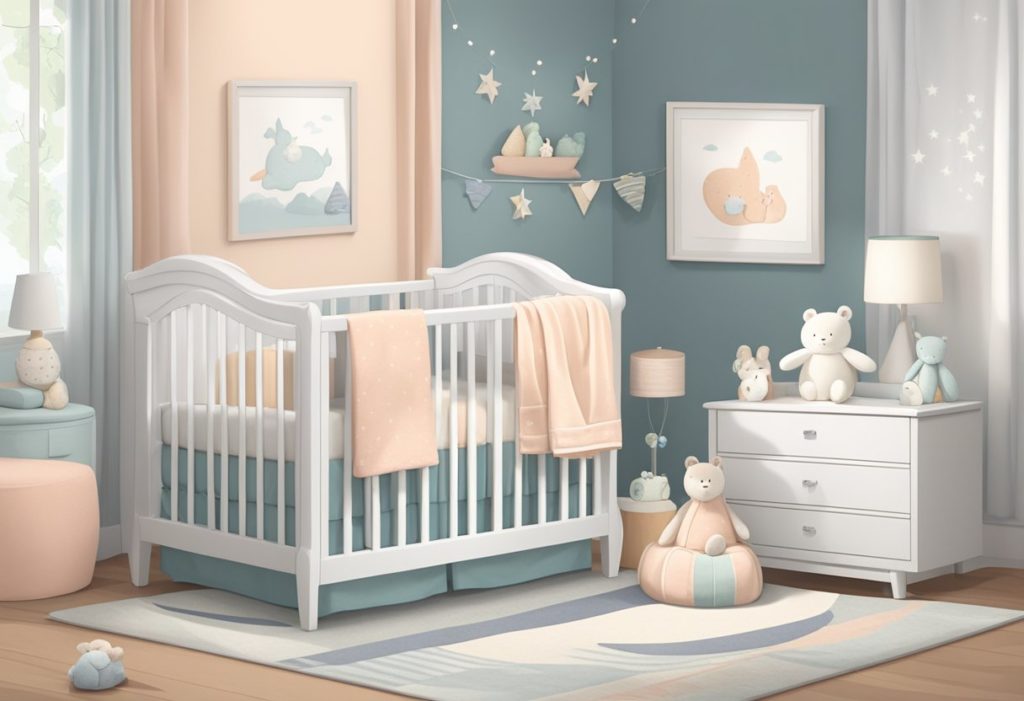
Choosing the right sleeper furniture for a baby involves prioritizing safety, considering development stages, and recognizing the importance of stable and secure designs. It’s crucial to select items that adhere to the latest safety standards and suit the family’s lifestyle, whether at home or on-the-go.
Cribs and Bassinets
Cribs are a central piece of infant sleep furniture, designed to be safe and supportive. Standard cribs are a popular choice due to their sturdy build and longevity. Parents looking for versatile options may choose convertible cribs, which can transform to accommodate a growing child. For those with limited space, mini cribs offer a compact and equally secure alternative.
- Standard Cribs: Must have fixed sides with slats no wider than 2 3/8 inches apart.
- Convertible Cribs: Should convert into toddler beds and, sometimes, into full-sized beds.
- Mini Cribs: Ideal for small spaces, while still maintaining the safety features of standard cribs.
Bassinets and Moses baskets are suitable for newborns and offer a cozy and confined space for infants. These should have a firm mattress and be free of soft bedding like nursing pillows or crib bumpers, which could pose a risk.
Travel and Portable Options
When considering travel and portable cribs, convenience should not compromise safety. Portable cribs should be easy to set up and fold down, with sturdy frames and secure locking mechanisms to prevent accidental collapses.
- Travel Cribs: Lightweight and foldable, ensuring a familiar sleep environment on-the-go.
- Portable Cribs: Often come with wheels that should be lockable for added stability when in use.
These options provide a practical sleep solution for families that are frequently mobile, allowing for a reliable sleep setup wherever they are.
Safety and Stability Review
Safety and stability are paramount when it comes to sleepers. Furniture should meet or exceed current safety standards set by organizations such as the Consumer Product Safety Commission (CPSC). Locking mechanisms should be checked to ensure they are functioning correctly, as they are essential for preventing accidents.
- Stability: Regardless of type, sleepers should not wobble or tip under normal conditions.
- Locks: Components like wheels or folding parts should have robust locks to prevent movement.
Avoid placing stuffed animals or other soft items in the sleeper, as they could inadvertently lead to suffocation risks. Regularly inspect sleepers for wear and tear and always adhere to manufacturer guidelines for weight and size limits to ensure ongoing support for the baby’s development.
Accessories and Additional Considerations
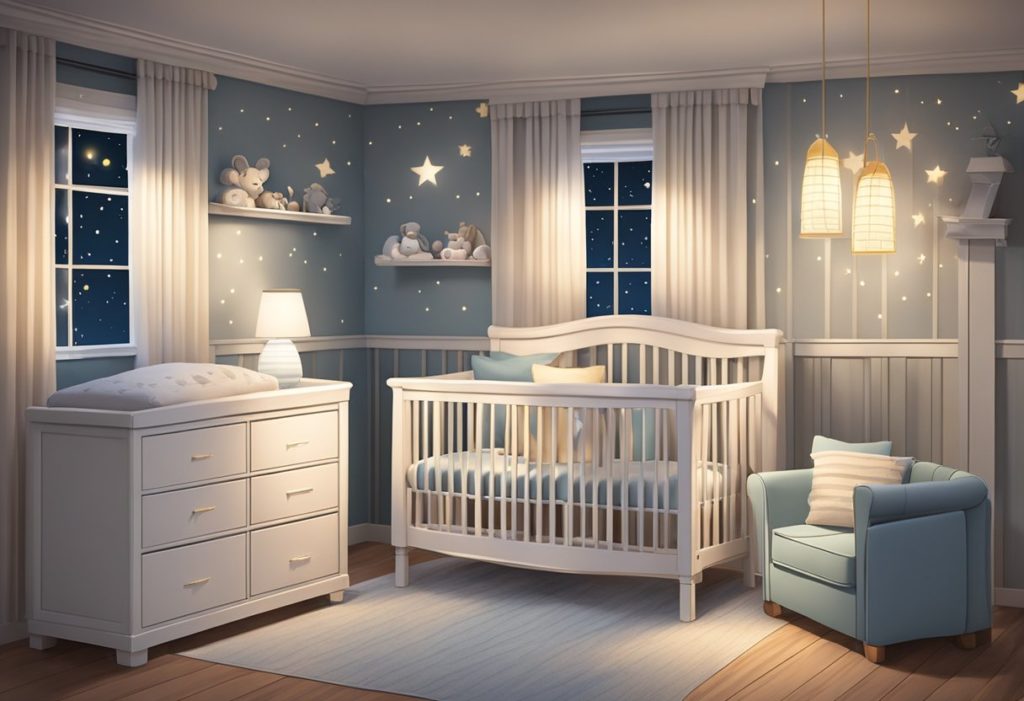
When setting up the perfect sleep environment for a baby, considering the right accessories and adjustments is essential for ensuring safety and comfort.
Sleep Accessories
In the pursuit of restful sleep, parents often turn to sleep accessories that enhance comfort while meeting safety standards. Soft, breathable blankets and appropriately sized pillows can contribute to comfort, although it’s crucial to avoid overcrowding the crib with these items. Experts recommend the use of sleep sacks or swaddling for younger babies to keep them snug without loose bedding. It’s also common to include stuffed animals for older babies, ensuring that these are not too small to pose a choking hazard or too large to risk suffocation.
Height and Support Features
The height of the baby sleeper and the adjustable mattress height are significant for comfort and safety. Many sleepers come with adjustable mattress heights, allowing parents to lower the mattress as their child grows, thus preventing potential falls. It is essential to adjust the height correctly to safely contain the baby while ensuring that the caregiver can comfortably reach in to lift the baby without strain.
Managing Temperature and Comfort
To manage a baby’s sleep temperature, avoid overheating by choosing sleepwear and bedding made of natural fibers over synthetic materials that can trap heat. Warmth can be maintained appropriately with a comfortable room temperature and the use of a well-designed sleep sack. Parents must also consider the breathability of fabrics to ensure adequate air circulation, reducing the risk of the baby becoming too warm during sleep.
Maintenance and Care for Baby Sleepers
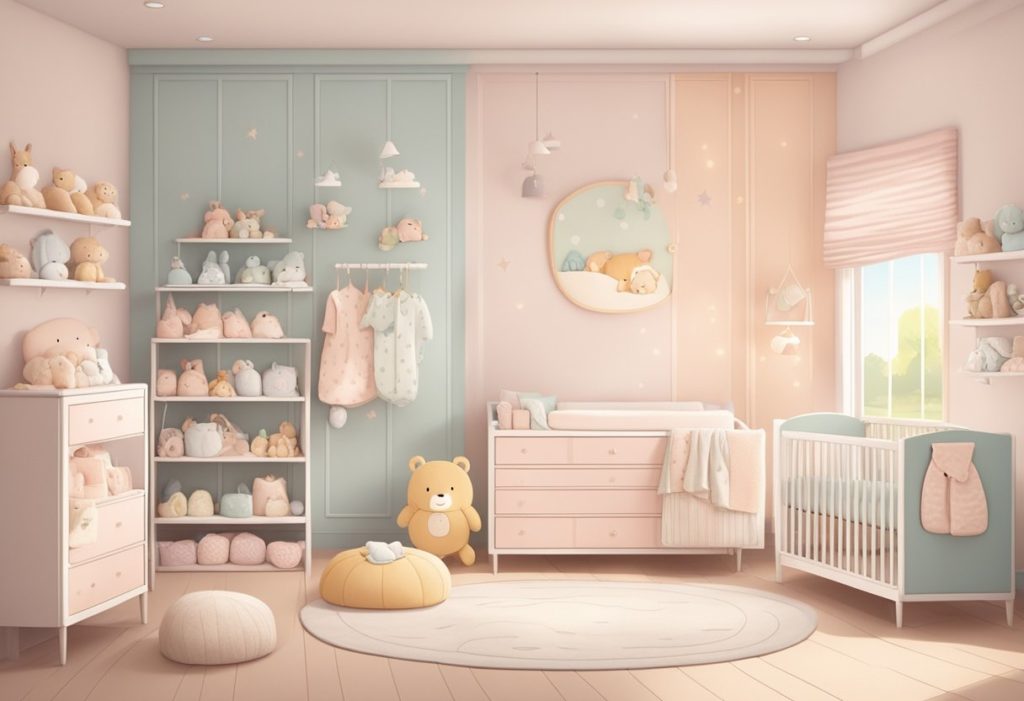
When selecting baby sleepers, the aspect of maintenance cannot be overlooked. Care routines contribute to the longevity and safety of sleepers. Parents should seek options that are machine-washable for ease of cleaning. Fabrics should be laundered according to the manufacturer’s instructions to maintain high quality over time.
Cleaning Procedures:
- Machine-Washable Fabrics:
- Remove any detachable parts.
- Use a gentle, baby-friendly detergent.
- Set the washing machine to a delicate cycle with warm water.
- Wooden Parts:
- Wipe with a damp cloth using a mild cleaner.
- Dry immediately to prevent warping.
- Crib Mattress Care:
- Opt for waterproof mattress protectors.
- Clean spills promptly to prevent mold and mildew.
- Spot Cleaning:
- Address stains on non-washable materials with a targeted fabric cleaner.
- Always test a small, inconspicuous area first.
Inspection and Repair:
- Sturdy Construction:
- Regularly inspect for loose screws or wobbly parts.
- Tighten connections to ensure the sleeper remains stable.
- Fabric and Seams:
- Check for any tears or runs in the fabric.
- Repair or replace if the integrity of the sleeper is compromised.
Proper maintenance not only keeps the sleeper looking good but also safeguards the baby’s health and comfort. Robust and well-cared-for baby sleepers support peaceful sleep and grow with the child.
Frequently Asked Questions
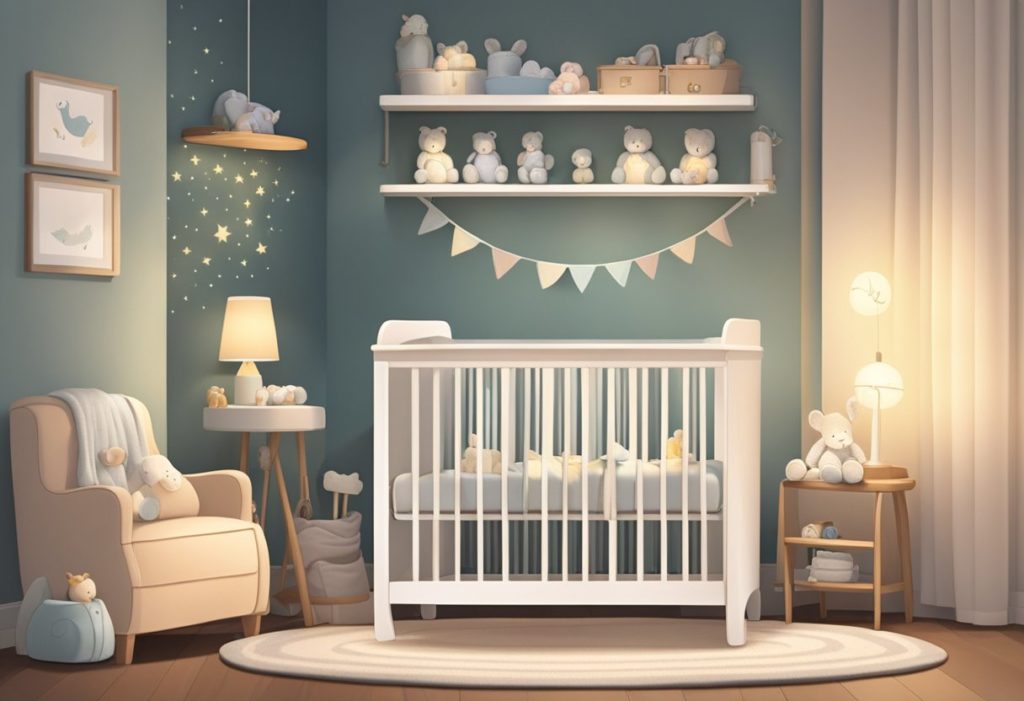
In this section, readers will find concise answers to common concerns about ensuring safe and comfortable sleep for their babies through the choice of appropriate sleepwear.
Conclusion

Selecting the perfect baby sleeper is a significant decision for any parent, as it directly impacts their child’s comfort and safety during sleep. By considering factors such as material, size, and design, parents can ensure that their baby has a restful slumber.
- Material: Look for breathable, non-toxic fabrics.
- Size: Choose a size that allows for growth but is not too large to avoid excess material.
- Design: Opt for sleepers with easy access for diaper changes and features that promote safe sleeping.
Parents are encouraged to give different baby sleepers a try, keeping in mind their baby’s unique preferences and needs. With careful consideration and a thorough review of options, including those highlighted in this guide, finding the ideal sleeper can be a seamless process. Now is the moment to ensure nights are safer and more comfortable for the little one.
No Comments yet!